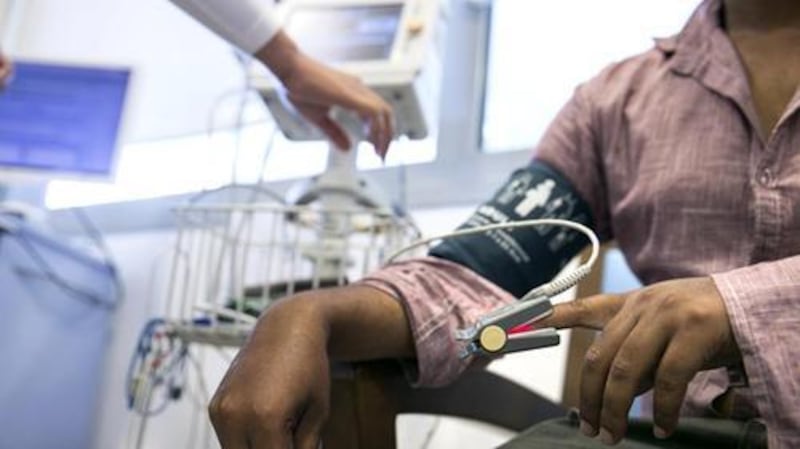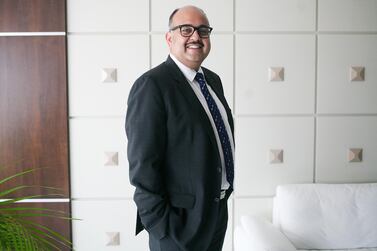Imagine a patient enters the emergency room after a car accident. An AI-enabled CT scanner can sort through hundreds of the patient’s scans and identify the most critical images for the radiologist to read. This means a faster and more accurate diagnosis for the patient, and valuable time saved for the clinician.
Or imagine a patient is undergoing cancer treatment. Knowing whether the treatment is working, and pivoting course accordingly, is critical. By using deep learning applications that automate and standardise measurement, clinicians can feel more confident in determining whether a patient is responding positively or negatively to treatment.
Big data, artificial intelligence and patient-experience centered solutions are just some of the key trends that will continue to make health care simpler, more affordable and more accessible.
The future of healthcare will leverage precision diagnostics, therapeutics and monitoring to deliver world-class healthcare outcomes. Providers need to deliver better clinical decisions, in an environment that is operationally optimised. Patients need to be able to manage their own health, through a highly personalised consumer-friendly experience. This will help ease the cost burden on payers and policymakers, ultimately driving better public health.
“Virtual hospitals” are one such delivery model that is redefining healthcare. Whereas a traditional hospital is defined as a brick and mortar building with clinicians, patients and beds, a virtual hospital is a brick and mortar building with clinicians – but not beds or patients. Rather, it houses command and control centres leveraged by clinicians to run single or multiple tele-health programs. Coupling this with data analytics and monitoring devices, these clinicians can track and monitor patients from afar, deploying necessary interventions and staff when necessary.
This digital approach to managing care may be used in various settings, from monitoring ICU patients at rural hospitals through a hub and spoke model, to managing in-home programs for those with chronic illnesses. Given the perennial challenge of access to skilled workers, this type of solution could be of particularly value in Mena.
The UAE’s private health care sector has seen rapid consolidation in recent years. As ministries of health across the Middle East evolve from being both operator and regulator to only regulators, we can expect that increased private sector participation will drive further consolidation in the market.
Although there is a general notion that consolidation will always result in operational, strategic and financial gains, this is actually not often the case. The primary drivers of consolidation are access to capital and economies of scale. Smaller providers typically struggle to sustain the required investments in capital-intensive assets like equipment and IT, and can be challenged to contain costs while delivering the necessary productivity and service levels. As a result, consolidation can seem like a rational solution. By spreading these investments and back office operations over a broader base, the hope is the benefits of economies of scale will be realised.
But bigger does not always translate to better. The challenge is that more often than not, the acquiring organisation spends the majority of its focus on how to achieve scale. Consequently, there isn’t enough attention spent on planning how the merged organisations will actually operate as a well-optimised system and research shows that post-merger players often experience a decline in operating margins.
Healthcare providers should focus their efforts on what they do best - delivering clinical care - and consider outsourcing secondary medical services such as lab and radiology.
Take the radiology department, for example. It is one of the biggest expenses at most hospitals and can play a significant role in driving hospital profits. However, most hospitals miss major opportunities to increase profitability of their radiology departments due to poor productivity and a lack of access to capital to make the necessary technological investments. Depending on the providers appetite for change, several risk sharing models can be utilised, from managed services to full outsourcing.
Health care has yet to undergo the full digital transformation that other consumer sectors have experienced, but the role of digital services and solutions is starting to redefine both how and where care is delivered.
Through the right regulations, governments can play a strong role is incentivising health care providers towards achieving better outcomes and driving down costs. We are seeing an increased appetite for public-private partnerships in places like the UAE and Saudi Arabia.
As the sector continues to mature, we can expect policies put in place that will focus more on driving better patient outcomes. By incentivising healthcare providers to prioritise wellness and prevention, we will see a fundamental shift in how the entire ecosystem operates. The most effective way to improve outcomes is to catch and treat disease earlier. It is not an easy task, but it is what is necessary to drive true transformation in health care.
Jessica Mbaeliachi is the Head of Enterprise Solutions for GE Healthcare in the region.







